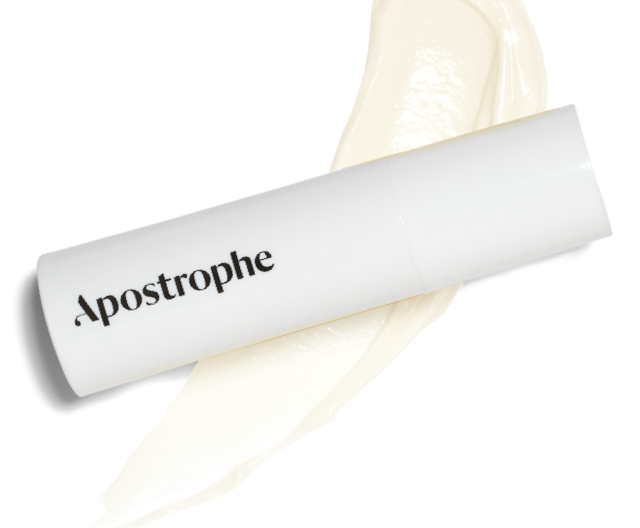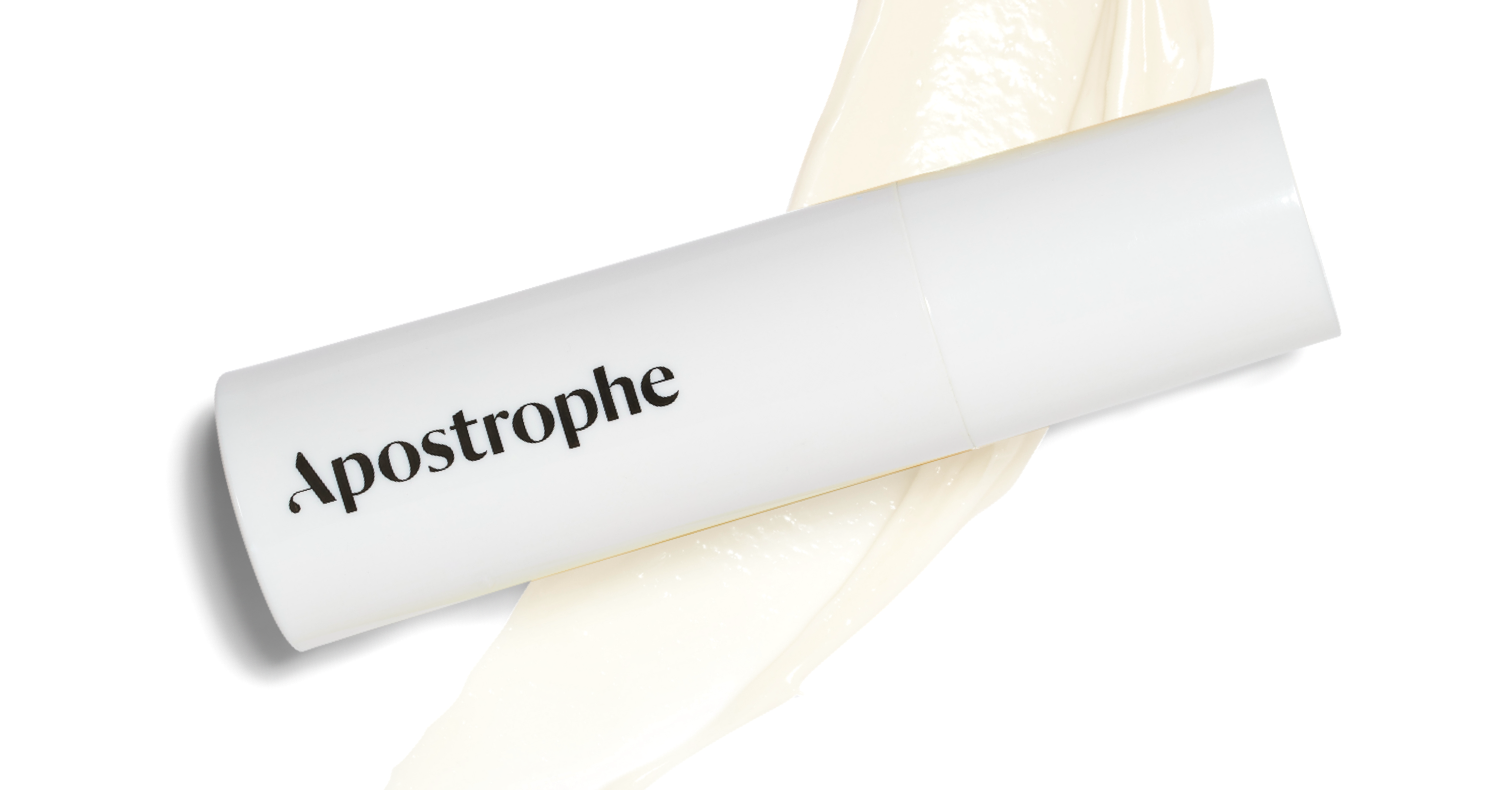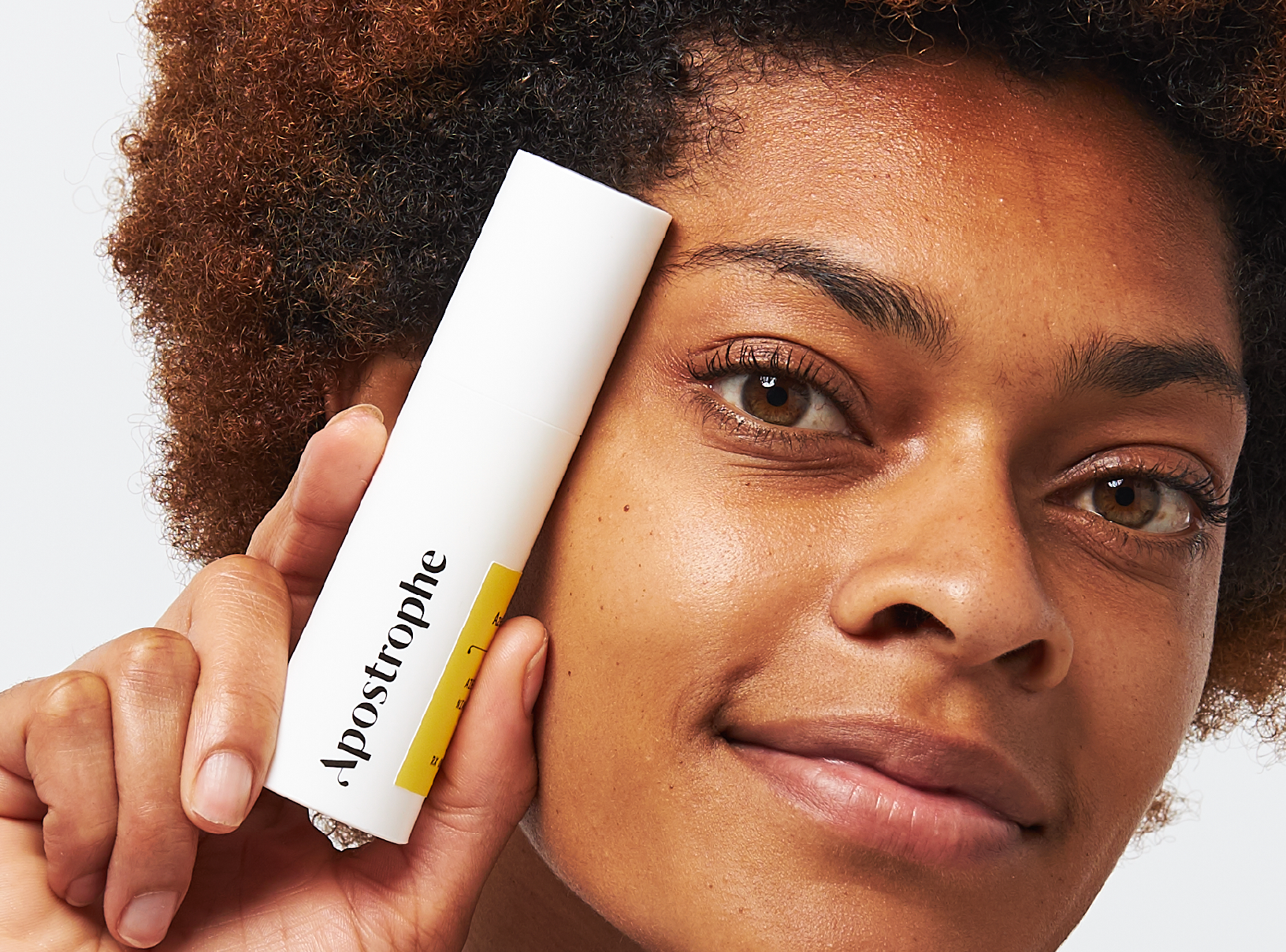Education
Why Skin Cell Turnover Matters for Acne and Aging


SHARE
Education
Why Skin Cell Turnover Matters for Acne and Aging
Medically reviewed by Kristin Hall, FNP
Written by Apostrophe Team
Last updated 4/5/2024
Taking care of your skin is a full-time job — a job that your body takes care of in the background without you ever noticing.
As your body’s largest organ, your skin requires a good amount of maintenance in order to look, feel and function properly. Your body does this through a process called “skin cell turnover,” or “skin cell rejuvenation.”
Skin cell turnover is the process of producing new skin cells to replace existing skin cells. It’s a vital aspect of keeping your skin smooth and healthy. Like many biological processes, it’s also something that can slow down and become less efficient as we age.
The skin cell turnover process affects everything from your skin’s overall health to conditions like acne. It also affects the visible “age” of your skin, causing (or, if kept optimal, preventing) things like wrinkles, age spots and other visible signs of aging.
In this guide, we’ll explain how the skin cell turnover process works, as well as the key factors that affect it. We’ll also share why it matters for skin conditions such as acne, wrinkles, age or liver spots, hyperpigmentation and more.
What Is Skin Cell Turnover?
Skin cell turnover is the process of creating new skin cells to replace existing ones. Every day, your skin is exposed to wear and tear, whether in the form of UV radiation from the sun, wind damage, scratches or bruises, rashes, bacteria, fungus and numerous other sources.
To ward off this damage and keep your skin healthy, your body needs to constantly produce a new supply of skin cells.
During the skin cell turnover process, cells move up from the deepest layer of the skin (called the subcutaneous layer) up to the dermis, and finally to the epidermis — the thin top layer of skin that’s exposed to the air.
As cells go through this process, they harden and eventually die, with your body replacing old skin cells with new ones. Skin cell turnover is a continual process that’s always going on, with most people never even noticing.
When your body replaces old skin cells with new ones, it also removes the dead cells that can accumulate on the surface layer of your skin through a process called exfoliation.
Like most biological processes, skin cell turnover is affected by a variety of factors. Your diet, hormones, sleep patterns, stress level, amount of sun exposure, and overall health all play an important role in promoting healthy skin cell turnover.
Skin Cell Turnover and Aging
Another factor that affects skin cell turnover is age. As we get older, our bodies take longer to replace old skin cells with new ones.
On average, it takes an estimated 40 to 56 days for your epidermis to completely turn over, but that timeline only lengthens as we age.
This slowdown in your body’s ability to replace skin cells has several effects on the appearance of your skin.
Because it takes longer for your body to replace existing skin cells with new ones, dead cells can linger for longer on your skin. This increases the risk of wrinkles, sagging and other visible signs of aging.
The slower removal of dead skin cells also makes it easier for bacteria to accumulate on the surface layer of your skin, resulting in visible blemishes.
Slower-than-normal skin cell turnover can also make hyperpigmentation — patches of skin that are unusually darkened — more common, as older skin cells can produce excessive amounts of melanin, causing certain areas of your skin to darken more than others.
In short, the slowdown in your body’s skin cell turnover cycle that occurs as you age is one of the key causes of many of the visible signs of aging, from wrinkles to discoloration.
Skin Cell Turnover and Acne
Your body’s skin cell turnover cycle can also affect your risk of developing acne. Acne develops when a combination of dead skin cells and sebum (a type of natural oil produced by your body’s sebaceous glands) collects inside hair follicles.
As the dead skin cells and sebum build up inside the follicle, the follicle can clog, causing acne to develop.
Both whiteheads and blackheads form as a result of dead skin and sebum buildup. Whiteheads are the result of a closed pore becoming blocked by sebum and/or dead skin, while blackheads are caused by a surface-level blockage that’s exposed to air and sunlight.
Sometimes, bacteria can become trapped inside the hair follicle, resulting in an infection that can lead to inflamed or cystic acne.
Just like a faster skin cell cycle may make it easier for your body to rid itself of dead skin cells and prevent wrinkles from developing, a fast, efficient skin cell turnover cycle may also reduce your risk of developing acne by keeping dead skin cells off your epidermis.
It’s worth noting that skin cell turnover isn’t the only factor that affects your risk of experiencing acne outbreaks. Hormones, age and environment can also affect acne — it’s rarely a single-cause situation.
With this said, promoting a healthy skin cell turnover process can have very positive results if you have persistent or recurring acne.
How to Speed up Your Skin Cell Turnover Cycle
Search online for products designed to speed up your skin cell turnover cycle and you’ll find a wide range of cosmetics, many of which promise instantaneous and miraculous results.
Like many skin-related issues, speeding up your skin cell turnover cycle to lighten wrinkles or prevent acne isn’t something that happens overnight. However, there are several medications that are proven to increase skin cell turnover to fight acne and signs of aging.
One of the most widely used, safe and effective medications for increasing skin cell turnover is tretinoin, a topical cream or gel that you apply directly to your skin.
Tretinoin is widely used as an anti-aging medication, as well as a very common topical acne treatment. Because it’s topical, it doesn’t pass through your liver and has fewer side effects than most oral medications used to treat acne, wrinkles, and other skin issues.
How Tretinoin Works
Tretinoin is a retinoid — a medication derived from vitamin A. It works by increasing the rate at which your body produces new skin cells, resulting in a faster skin cell turnover process and a reduction in wrinkles, skin discoloration, and skin conditions such as acne.

PRESCRIPTION TRETINOIN
Target acne, dark spots, and signs of aging with this science-backed ingredient.
Unlike oral acne medications such as Accutane®, tretinoin has a relatively mild range of potential side effects, making it one of the first medications many dermatologists will prescribe to prevent acne or reduce the effects of photoaging.
Tretinoin cream is available in a variety of concentrations, allowing your provider to adjust your dose to best suit your needs and tolerance.
It can take several weeks for tretinoin to begin producing results when used for acne prevention. The results from tretinoin tend to get better over the long term, with most acne clearing as a result of long-term tretinoin usage.
Tretinoin can also take several months to work as an anti-aging medication. Studies show that tretinoin produces noticeable results in about three months, with long-term studies showing continual improvement in wrinkles, discoloration, and other issues over the course of one year.
Learn More About Tretinoin
Are you interested in using tretinoin to speed up skin cell turnover and reduce your risk of acne, wrinkles, hyperpigmentation, and other common skin issues?
Our guides to using tretinoin for acne and for anti-aging go into more detail on two of the most common uses for tretinoin. You can also learn more about tretinoin in our Tretinoin 101 guide, which covers everything from the medication’s history to its side effect profile.
Shop this post

Tretinoin
Like what you just read? Sign up for our email list to get the scoop on skincare science delivered straight to your inbox.

Education
What is milia?
What is milia? Today, we’re jumping into one type of bump that you may have heard about most commonly in infants — milia.
Read More
Education
Best moisturizer for acne-prone skin
If you have combination acne-prone skin, figuring out which moisturizer is best for your skin might be tough. In this guide, we break down the best moisturizer for combination, acne-prone skin.
Read More
Education
How to build a face care routine
As you get into skincare, it might seem overwhelming, especially trying to figure out the order you're supposed to apply products in. Below, we detail how to build a face care routine for your skin!
Read More